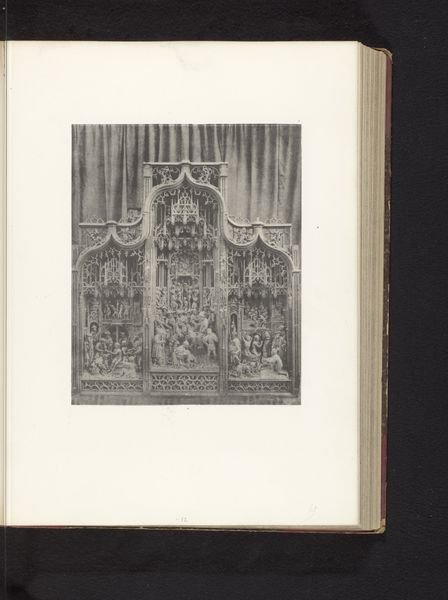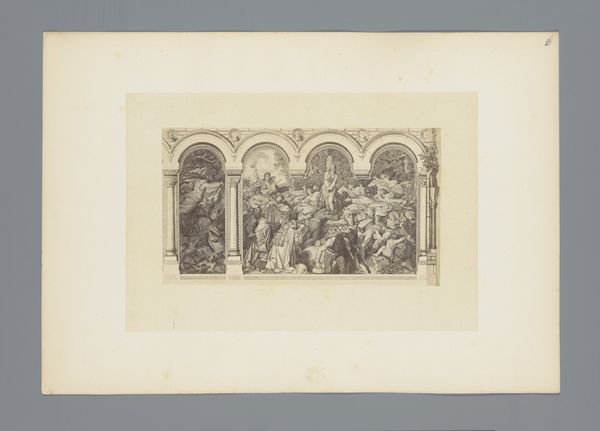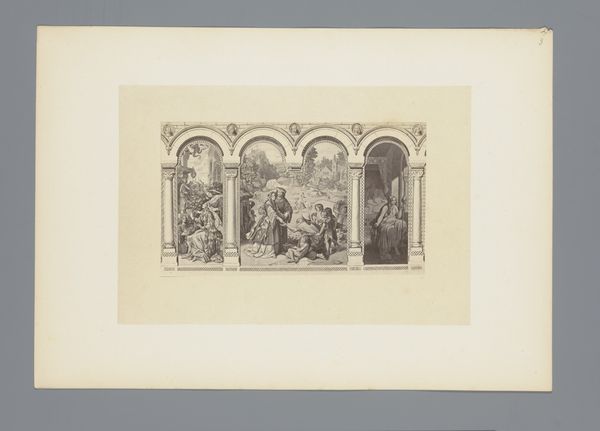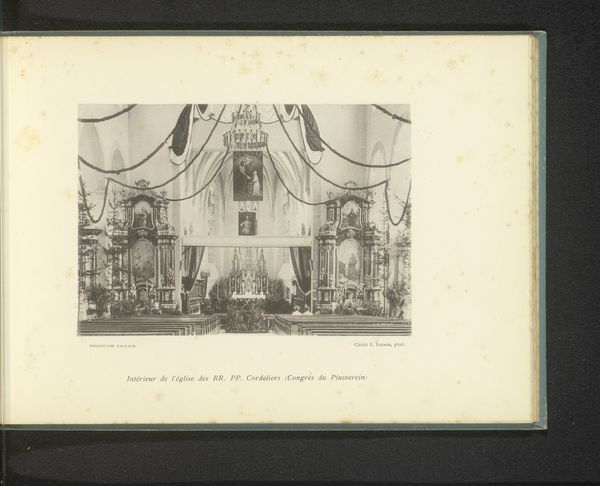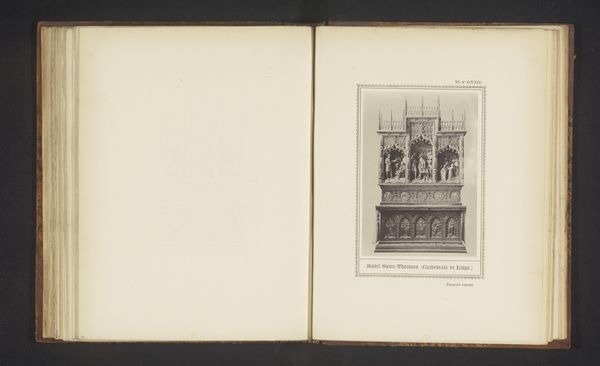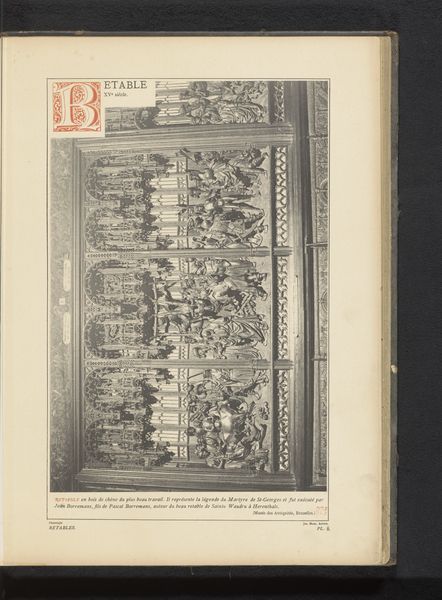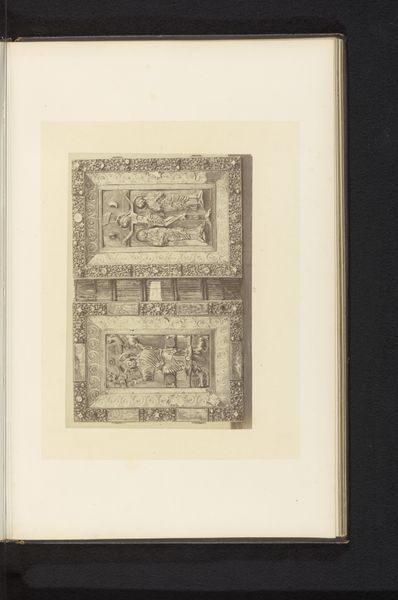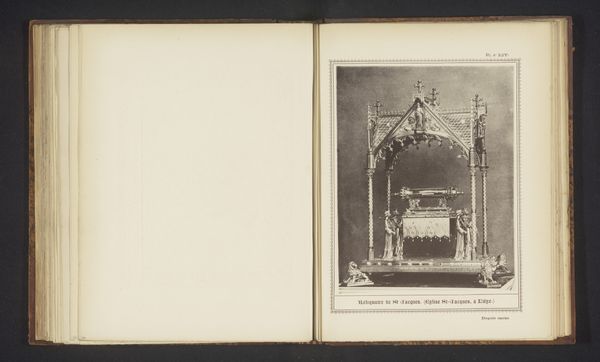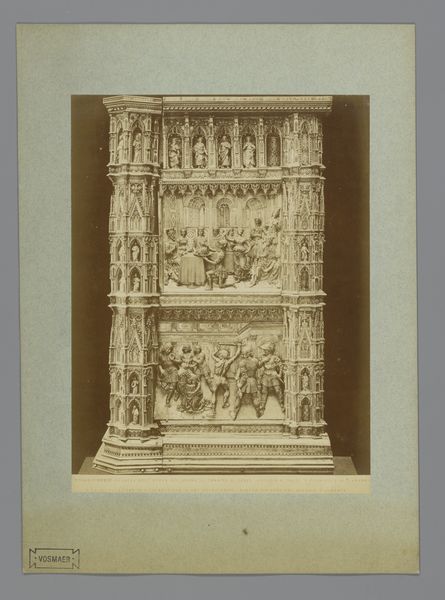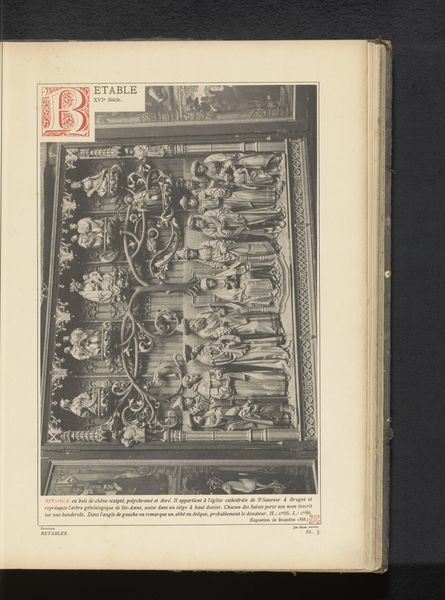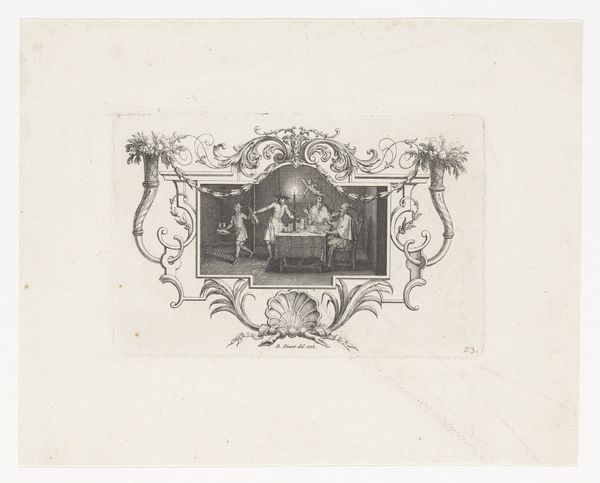
Eikenhouten altaarstuk uit de Sint-Waltrudiskerk in Herentals, opgesteld op een tentoonstelling over religieuze objecten uit de middeleeuwen en renaissance in 1864 in Mechelen 1864
0:00
0:00
carving, relief, sculpture, installation-art, wood
#
medieval
#
carving
#
relief
#
sculpture
#
installation-art
#
wood
#
history-painting
Dimensions: height 234 mm, width 207 mm
Copyright: Rijks Museum: Open Domain
This photograph captures an oak altarpiece from the Church of Saint Waltrudis in Herentals, displayed at an exhibition in Mechelen in 1864. It is rich in religious symbolism, depicting scenes from the life of Christ with intricate detail. Notice the recurring motif of the arch, framing each scene and drawing our eyes upwards. The arch, a symbol of covenant and divine presence, dates back to ancient Roman architecture. In Christian art, it signifies the gateway to sacred space and the promise of redemption. It appears in catacombs, mosaics, and illuminated manuscripts, each time carrying the weight of tradition and spiritual aspiration. Consider how the arch has evolved from a structural element to a potent symbol, laden with layers of cultural and religious meaning. Its enduring presence suggests a collective memory, a subconscious recognition of humanity's yearning for the divine. This altarpiece stands not merely as a work of art, but as a testament to the cyclical nature of symbols, their resurfacing, evolution, and adaptation across time.
Comments
No comments
Be the first to comment and join the conversation on the ultimate creative platform.
